« on: July 17, 2006, 01:08:08 PM »
LET'S TALK ABOUT 22VP932 ...Every laser games is working with a laser player, so this is the right problem for the modern collector.
In this section we are talking about 22VP932 philips laser disc player.
Philips produced this player using the 22VP830 home player, this choice is based on some commercial moves just to optimize the production and not thinking at the technical part and use of this player.
So the story of this player starts when ATARI gets the licence from the Cinematronics/Magicom to produce an european version of the Dragon's Lair game.
In Italy the production was made by Sidam.
The ATARI has got good relationship with the PHILIPS so they work together for this first game
Philips has to produce a player and a disc that as to work with the PAL standard.
The game PCB was directly produced from Cinematronics ( but for more detail on this point we'll talk in another section ).
Here is the player :
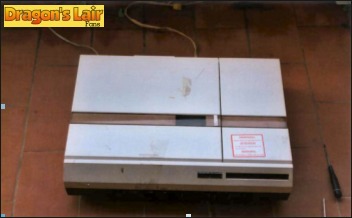
In this picture there's nothing to talk about ;-)
Just have a look, on the side near the label red and white, in the home player we can find the play, stop etc. buttons.
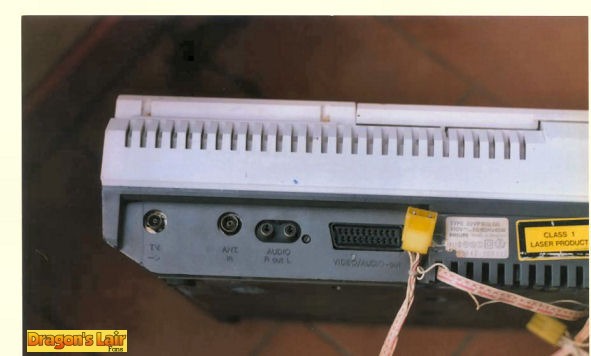
On the back we have the connections :
- RF TV
- pass-through ANTENNA
- Audio Connections
- SCART
- And the yellow wire !!! The RS232 TTL ….. ( but where is coming out from ? It's seems to be an home made hack……) to connect you Dragon's Lair PCB.
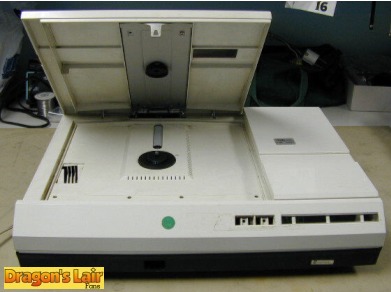
Let's open the player...
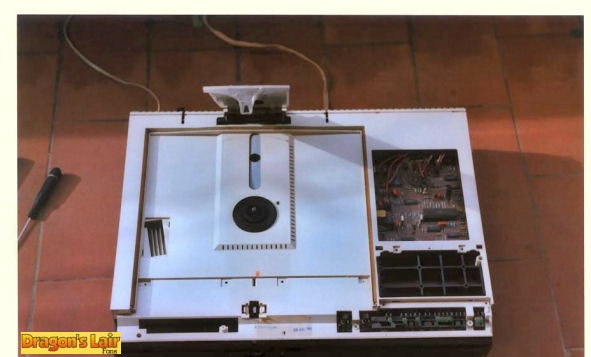
Just the first unmount of the player.
We have takef off the top and the DX side where we can notice some “squares”, look... they are the buttons of the home player.
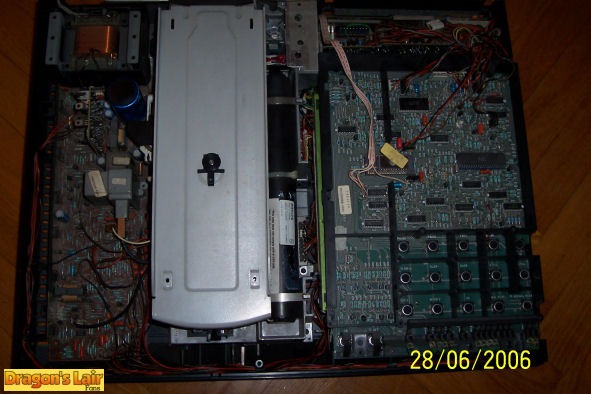
Now the player itself without plastic parts.
On the right there's the control pcb, below it there are the audio and video pcb.
In the middle we can see the hearth of the player, motor,optics and the laser tube.
On the left there's the power section, and in grey, the boost power for the laser tube.
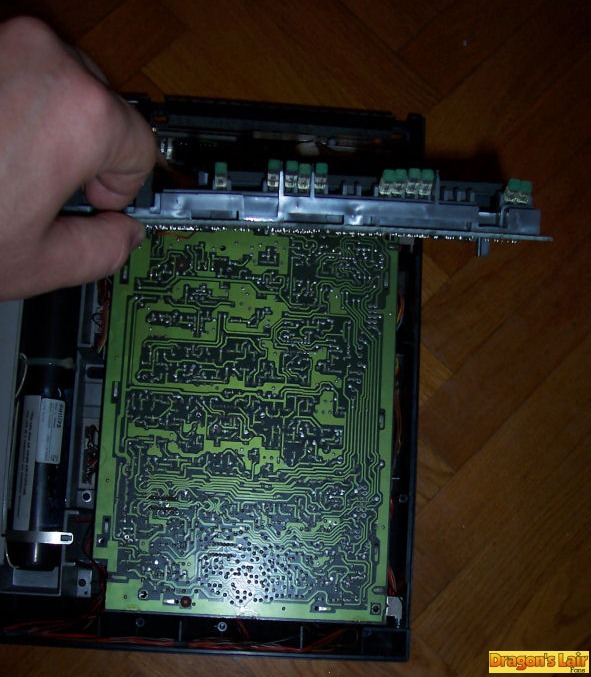
On the right, as we have seen, there are 3 PCB one above the other,
the first one is the control/command board (where's the TTL hack).
In the picture you can see the video board and below it there's the audio one :
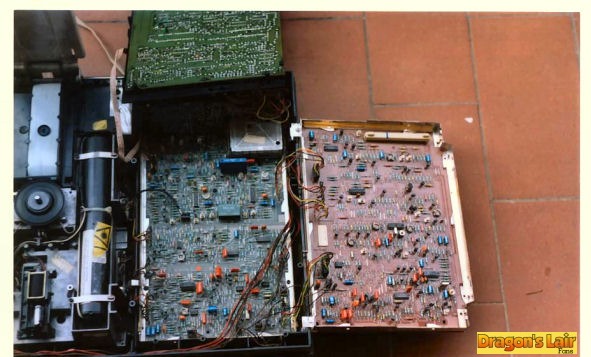
Here you can see better how the board are located.
This board are well done so it's difficult they have a fault.
The first problem is the rookie collectors/rent man, they try to repair the player twisting all the trimmers ... so we have an untuned player 
To tune this board is a quite hard work, if not impossible if you don't have the right instruments ( Igor has them :-) )
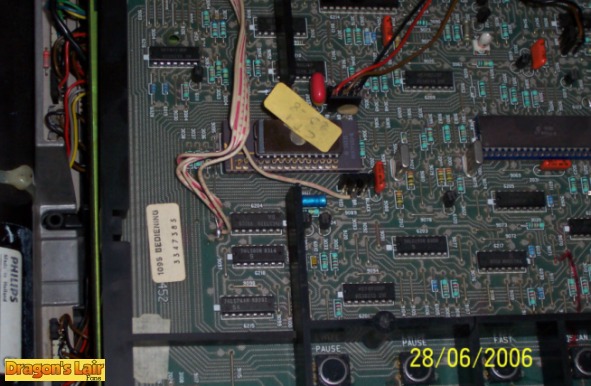
This is the HACK of the 232 TTL ( white wires )
I remember you this is the official player that philips sold ... no comment 
As you can see we have the eeprom ( labeled one ) with the program and on the right the CPU.
In the home player there's no eeprom and CPU, you'll find out only some integrates, so no 232....
On the board you an see the push buttons... not working at all 
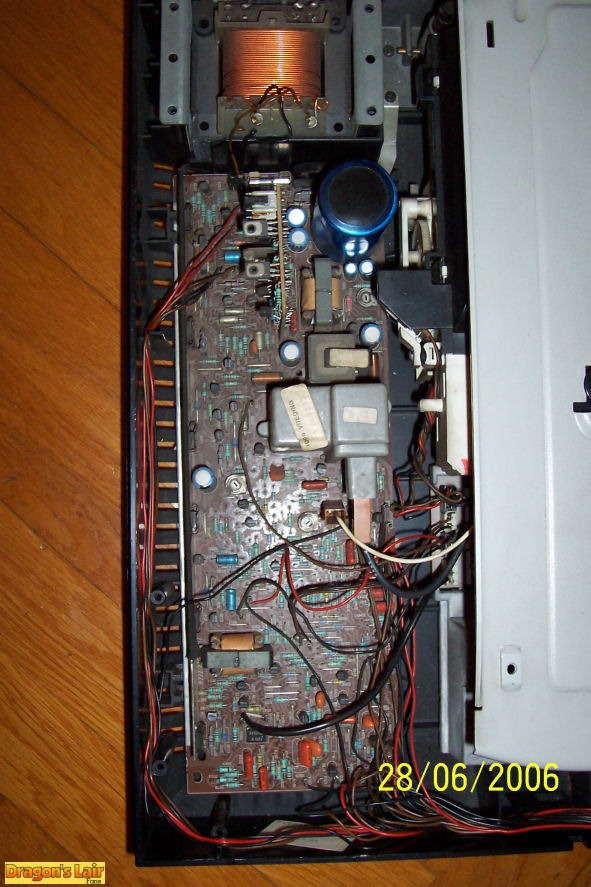
On the left now ( we have rotated the player ) you can see the power board. It's a switching power supply with boost for the laser tube.
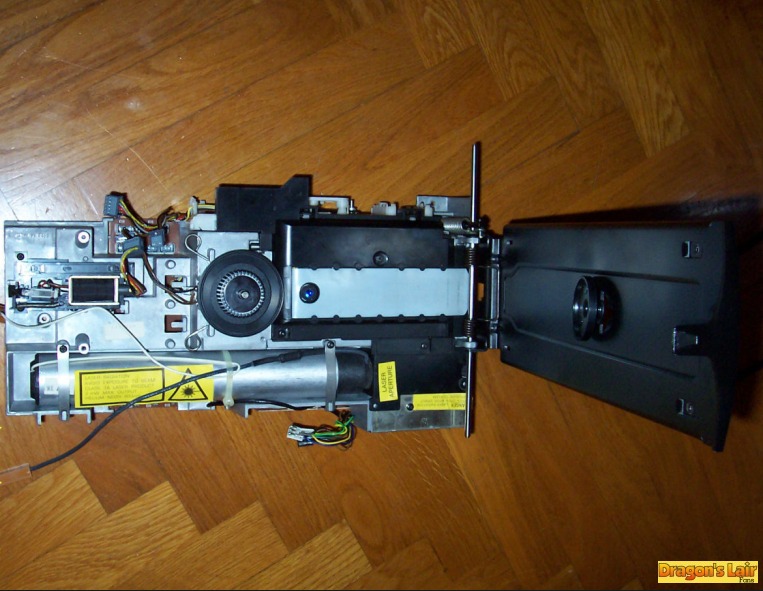
And now the most interesting part.... the one that gives more problems.... the optical.
It's possible to see some parts:
– the central engine
– the laser tube in grey (beware !!! it's very dangerous, it's a 3A class laser so it's the same used in hospital to cut !!!)
– on the bottom of the engine you can see the focal lens, it's were the laser ray is going to focus on the disc
In this player there's a reading mechanism called “bounce”  ? (rimbalzo).
? (rimbalzo).
The laser impacts the disc and goes back to the photodiode inside the player.
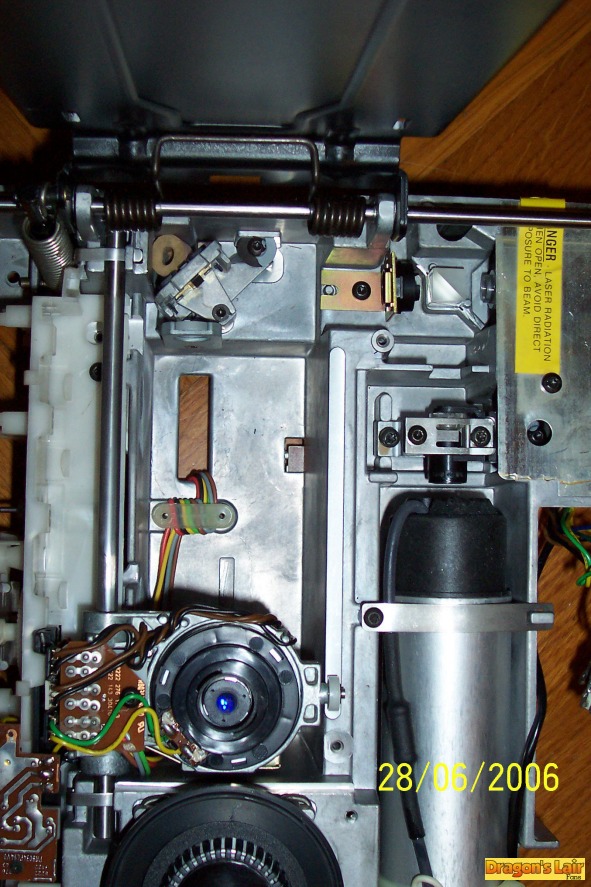
This is a quite clear picture of the optical mechanism, as you can see there's a lot of screws. All of them are very important for the focus tune.
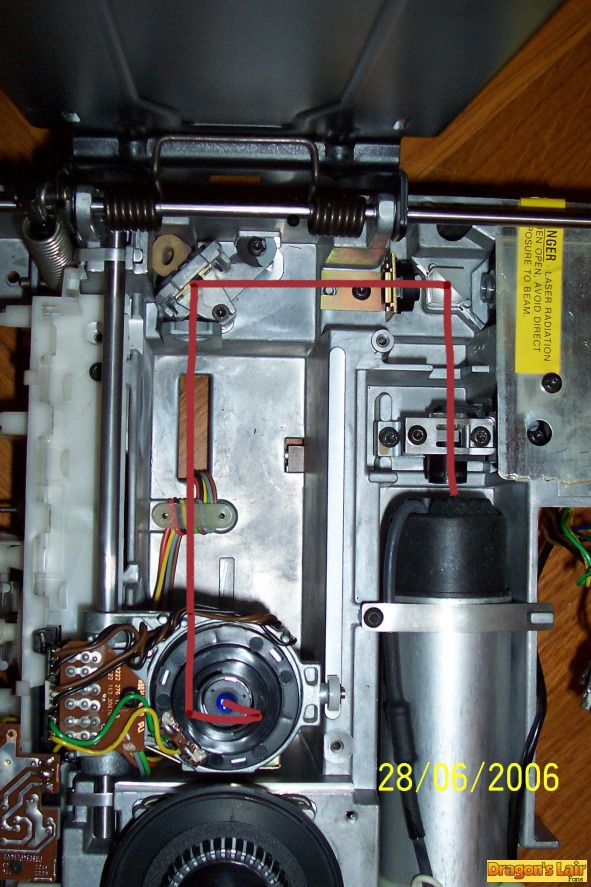
In this we have traced the laser “way” from the tube tu the disc (in red).
The laser comes out from the tube, the first lens give the focus then the prisms give the way to the laser.
And now the backward way (in blue) :
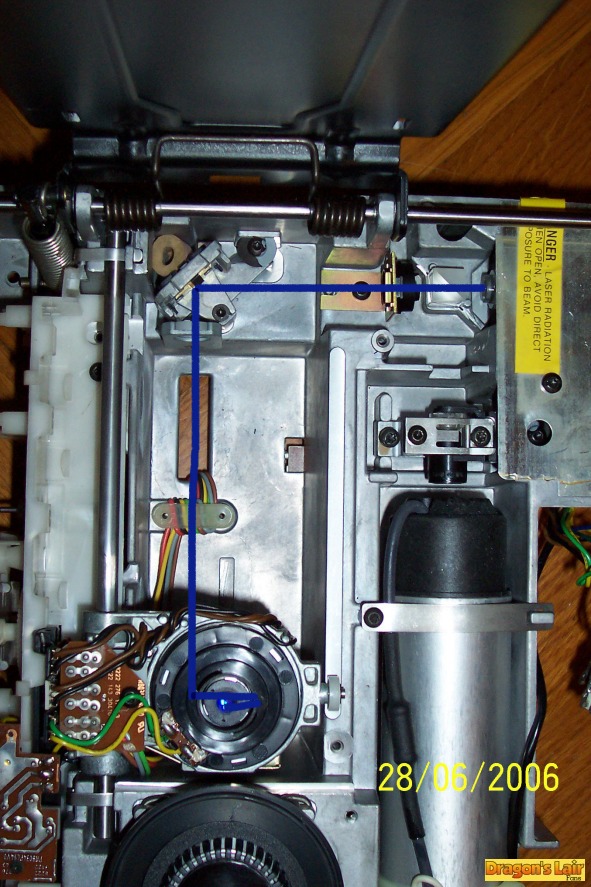
It's the photodiode that gives the information readed from the disc.
This is a quite semplified description, but feel free to ask ;-)
The main problem of these kind of players is that they are derived from the “home” ones :-(
 So they were projected to be used to see a movie not to be on working 8hours a day, 7 days a week. Tips and Tricks :
So they were projected to be used to see a movie not to be on working 8hours a day, 7 days a week. Tips and Tricks :
Common problems are :
 The engine , the brush exhaust quickly so you have to change it..... but no way you have to change the engine;
The engine , the brush exhaust quickly so you have to change it..... but no way you have to change the engine;
 The mirrors on the reading unit are attached to the head of the optis by some glue..... so sometimes they falling down;
The mirrors on the reading unit are attached to the head of the optis by some glue..... so sometimes they falling down;
 The lens sometimes goes to a wrong position, but this is a quite rare case;
The lens sometimes goes to a wrong position, but this is a quite rare case;
That's all folks !!!
Next article maybe on DL pcb ATARI/SIDAM ... 
 The LaserBridge Team.
The LaserBridge Team.
« Last Edit: April 29, 2009, 04:17:19 PM by DarthNuno »

Logged